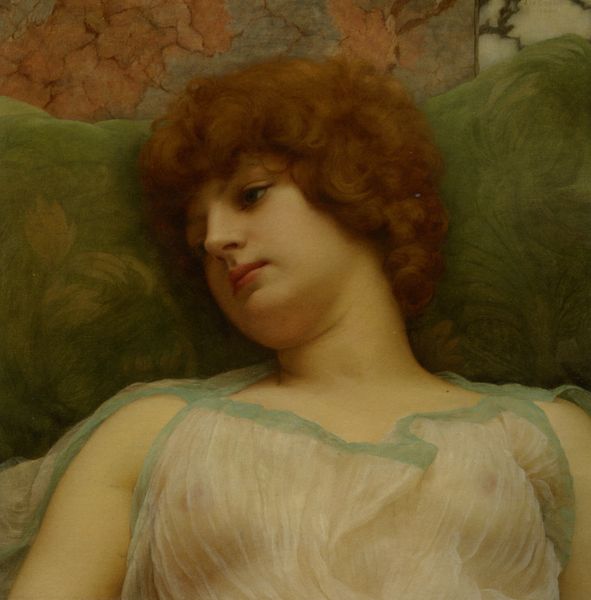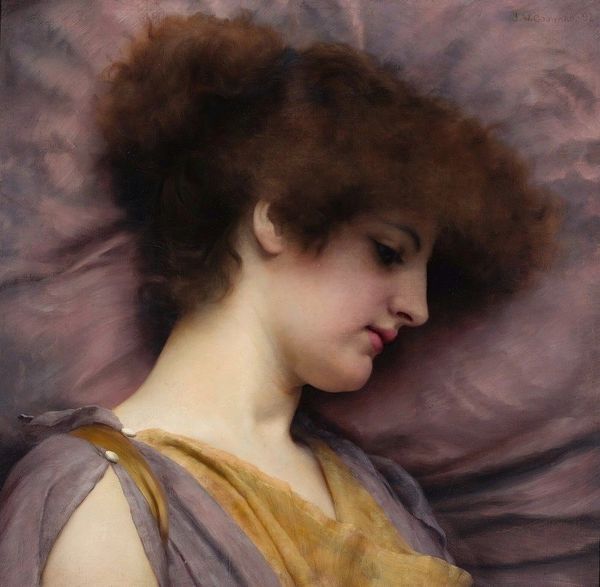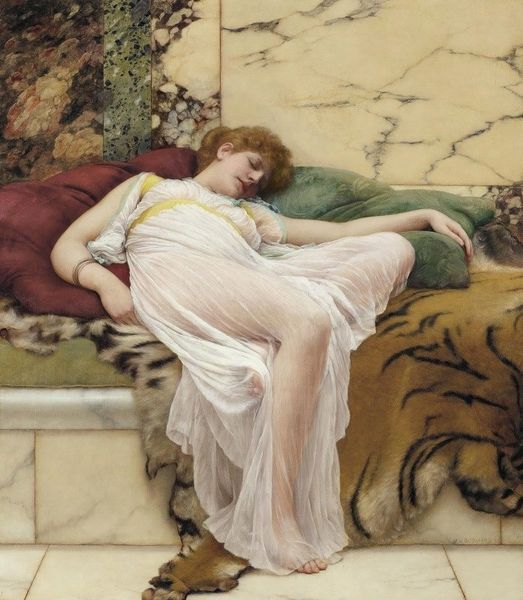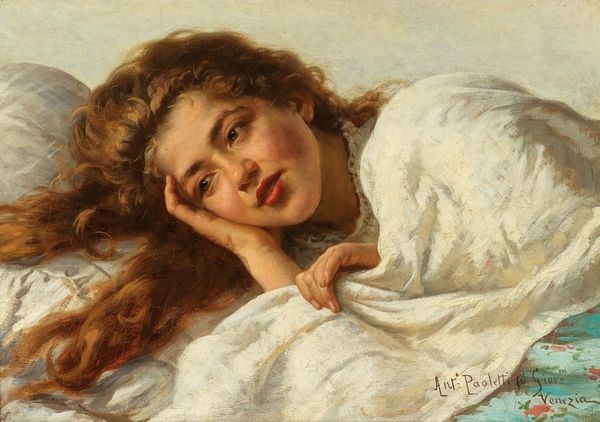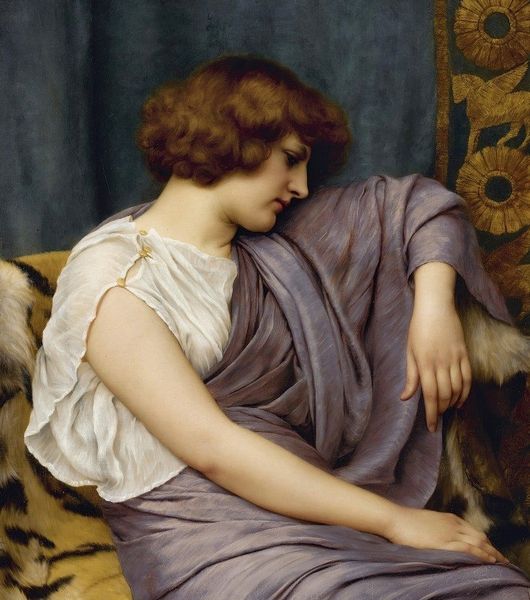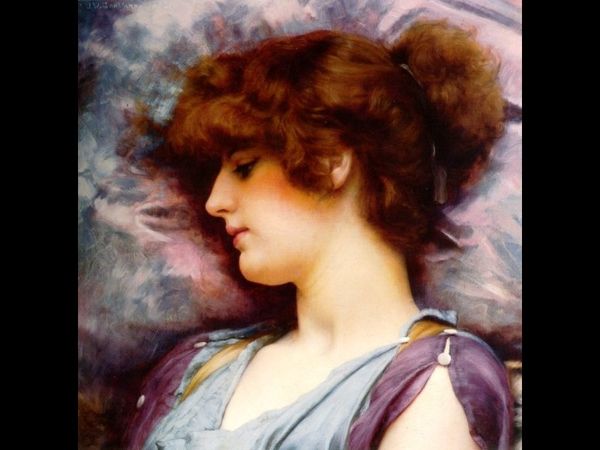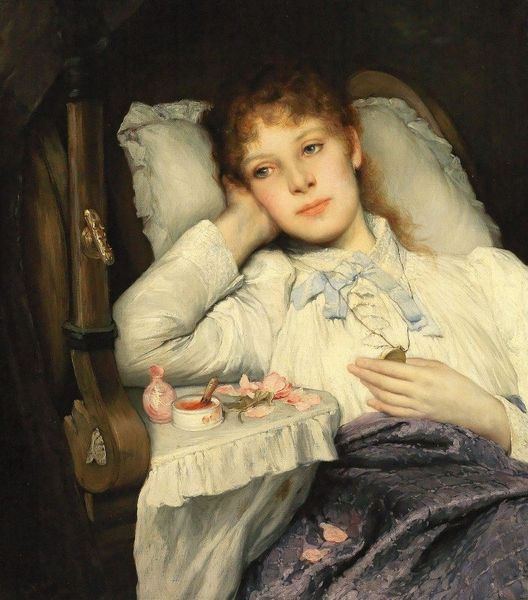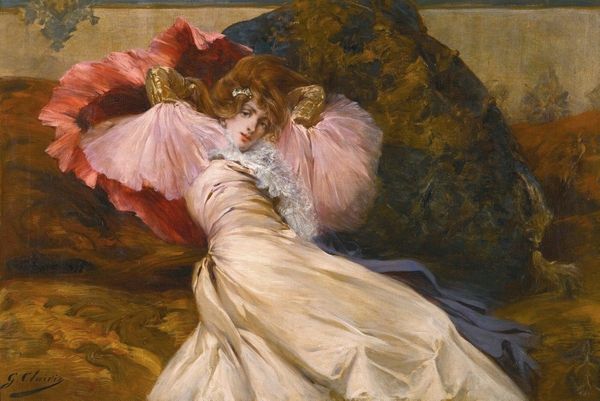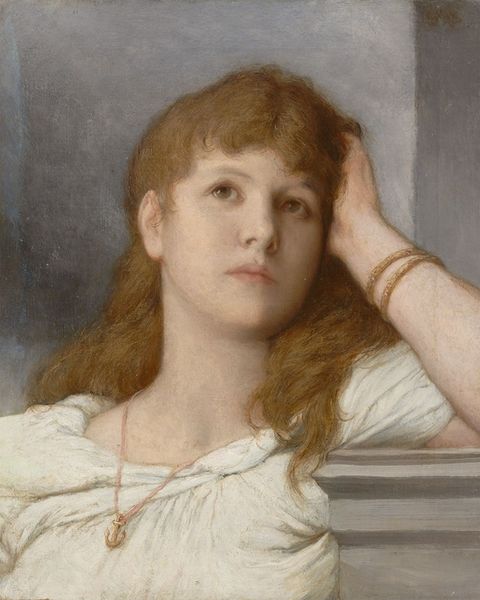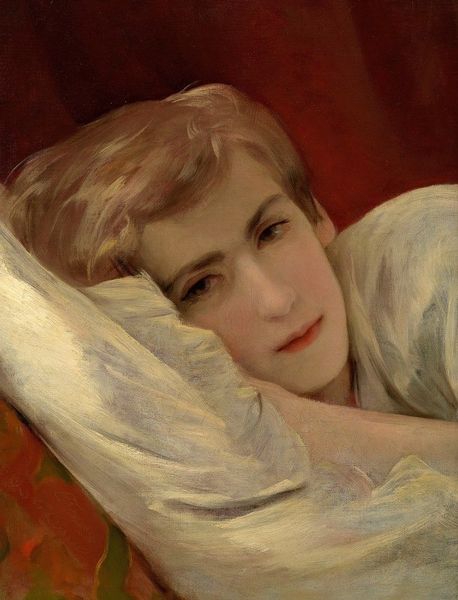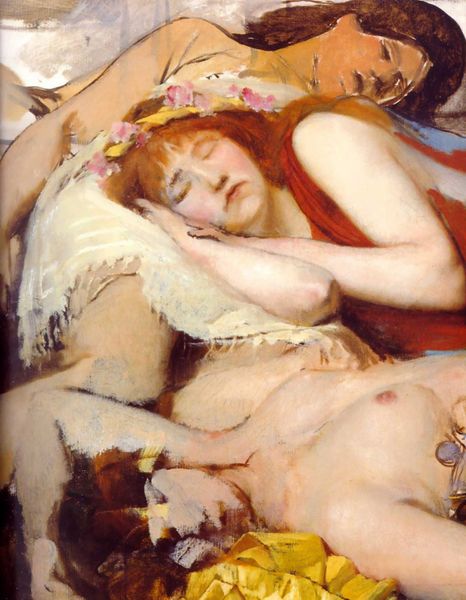
Copyright: Public Domain: Artvee
John William Godward painted Myrhinna in 1916. The painting is defined by its exquisite detail and the smooth, almost porcelain-like texture of the woman's skin, set against the cool marble backdrop. Godward masterfully employs color and light to evoke a sense of languid sensuality. The soft, warm tones of her skin and hair contrast with the cooler greens and purples of the drapery, creating a visually appealing tension. The composition, with the subject reclining diagonally across the canvas, directs our gaze, inviting contemplation. The subject's gaze, though serene, hints at a deeper interiority, but it is the formal elements—the textures, the light, and the composition—that truly carry the work's emotional weight, positioning it within a late 19th-century discourse on beauty, representation, and the construction of idealized forms.
Comments
No comments
Be the first to comment and join the conversation on the ultimate creative platform.
